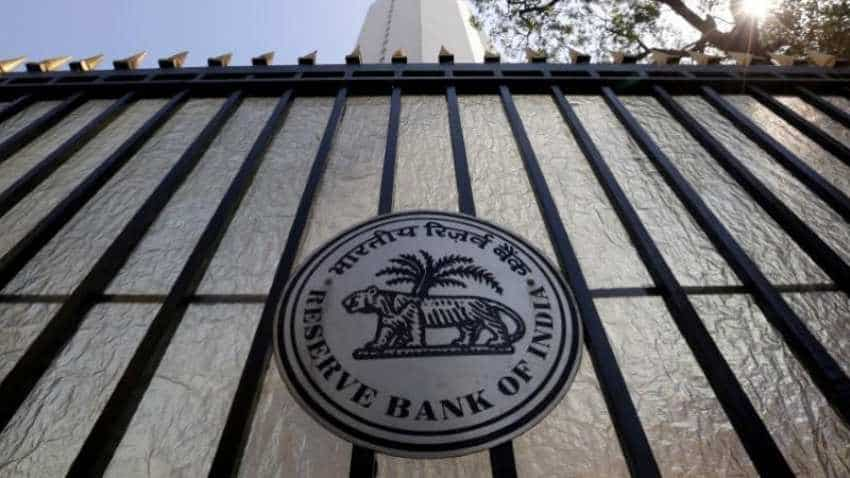RBI rate hike ahead of monetary policy meet likely; may hurt overall growth
With domestic fuel prices surging ahead and global crude oil prices remaining high over $80 a barrel coupled with free fall of rupee and widening current account deficit, the situation is not all that comfortable for the central bank to continue with the pause in repo rate hike during the current month’s monetary policy.

Low CPI inflation at 3.8% in September may be welcome but this does not mean all is well on the price front as wholesale inflation increased to 5.13% in the same month, indicating the Reserve Bank of India might have to resort to a rate hike ahead of its December monetary policy.
With domestic fuel prices surging ahead and global crude oil prices remaining high over $80 a barrel coupled with free fall of rupee and widening current account deficit, the situation is not all that comfortable for the central bank to continue with the pause in repo rate hike during the current month’s monetary policy.
In addition, the monetary tightening by the US Federal Reserve is making dollar appreciate and aggravating the woes of emerging economies like India.
The RBI has already indicated during the unveiling of last monetary policy that there cannot be any monetary easing but only monetary tightening as we go along.
The RBI’s Monetary Policy Committee decided to keep policy rates on hold, contrary to the consensus view in the market in the October policy.
The short-term repo rate was kept unchanged at 6.5% and accordingly, the reverse repo and marginal standing facility rates stood at 6.25% and 6.75%.
Repo rate is the rate at which the central bank lends money to commercial banks in the event of any shortfall of funds. It is used by monetary authorities to control inflation. Reverse repo rate is used by the central bank to borrow money from commercial banks within the country. An increase in reverse repo rate will decrease the money supply and vice-versa, other things remaining constant.
According to Crisil Research, the decision to hold rates in October policy is based on the factors to observe the evolving situation on the inflation front, which was lower than expected and due to a sharp slowdown in food inflation. Secondly, the RBI wanted to support liquidity in the system, which had come under pressure recently.
Former NIPFP director and 14th finance commission member, M Govinda Rao told DNA Money that all is not well on the inflation front, even though CPI inflation is within the range.
Watch Zee Business video here:
“Oil prices are a problem. High domestic fuel prices have a cascading effect on prices as transport costs go up for all commodities. Also, there is 9% shortfall in rainfall this monsoon season, so it is to be seen if it would have an impact on agri production,” he said.
“True food inflation is still low and hence CPI inflation is low. But when we look at wholesale inflation the picture is not all that good. CPI inflation comes with a lag effect,” Govinda Rao said.
“With oil prices surging and rupee depreciating sharply, my fear is that RBI might have to resort to yet another rate hike and it is quite possible that the central bank might not wait till its December monetary policy,” he pointed out.
Rao is of the view GDP growth will anyway slowdown in the second half of the year because of various other factors including the woes on the trade front. The euphoria over 8.2% GDP growth in the first quarter of this financial year was unwarranted. The second quarter is likely to be close to 7.5% and in the subsequent two quarters, it is expected to be around 6.5-6.7%. Overall, India may end up with around 7.3-7.5% GDP growth this fiscal, which will be nowhere near 8% as projected earlier.
Devendra Kumar Pant, chief economist, India Ratings & Research (Fitch Group), said, “Sequentially, out of three major groups, primary articles inflation increased sharply in September and fuel and light, and manufactured inflation moderated in September.
“Non-food manufacturing growth moderated consecutively in the second month; even in CPI inflation, the same trend was observed. However, it has remained more than 4% in the last five months.”
“It suggests though the demand conditions in the economy have remained strong, the pace of demand growth is gradually declining,” said Pant.
The prevailing market price for most kharif crops at major mandis has remained lower than the MSP, suggesting procurement hasn’t picked up,” added Pant.
“The future inflation trajectory would depend on the response of mandi prices with respect of new MSP and the movement of crude oil price and value of the currency,” he added.
Get Latest Business News, Stock Market Updates and Videos; Check your tax outgo through Income Tax Calculator and save money through our Personal Finance coverage. Check Business Breaking News Live on Zee Business Twitter and Facebook. Subscribe on YouTube.
10:20 AM IST












 SBI writes to RBI to consider non-financial transactions as well for tagging an account as operative
SBI writes to RBI to consider non-financial transactions as well for tagging an account as operative Banks should adopt 'bottom-up' approach for preparing credit plan: RBI's Swaminathan
Banks should adopt 'bottom-up' approach for preparing credit plan: RBI's Swaminathan RBI lifts restrictions on Sachin Bansal's Navi Finserv
RBI lifts restrictions on Sachin Bansal's Navi Finserv India's services exports rise 22.3% to $34.3 billion in October, as per RBI data
India's services exports rise 22.3% to $34.3 billion in October, as per RBI data  RBI working to create robust data analytics ecosystem: Dy Guv Swaminathan
RBI working to create robust data analytics ecosystem: Dy Guv Swaminathan